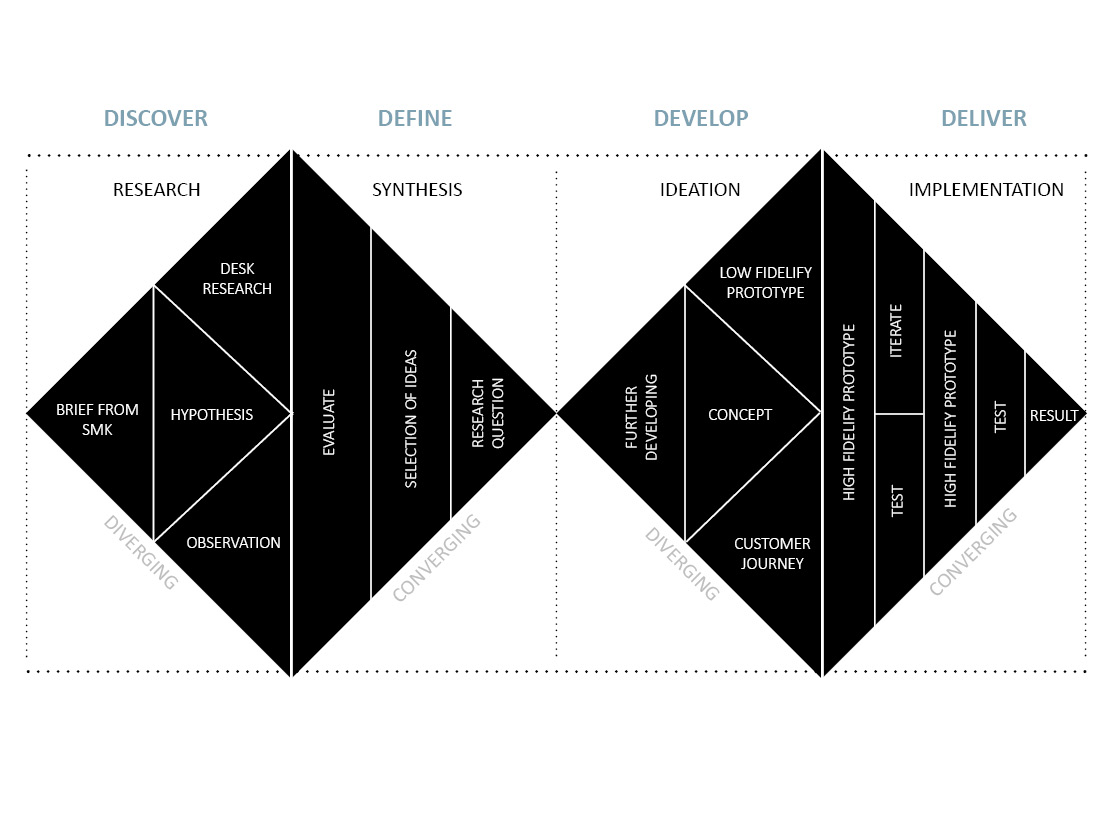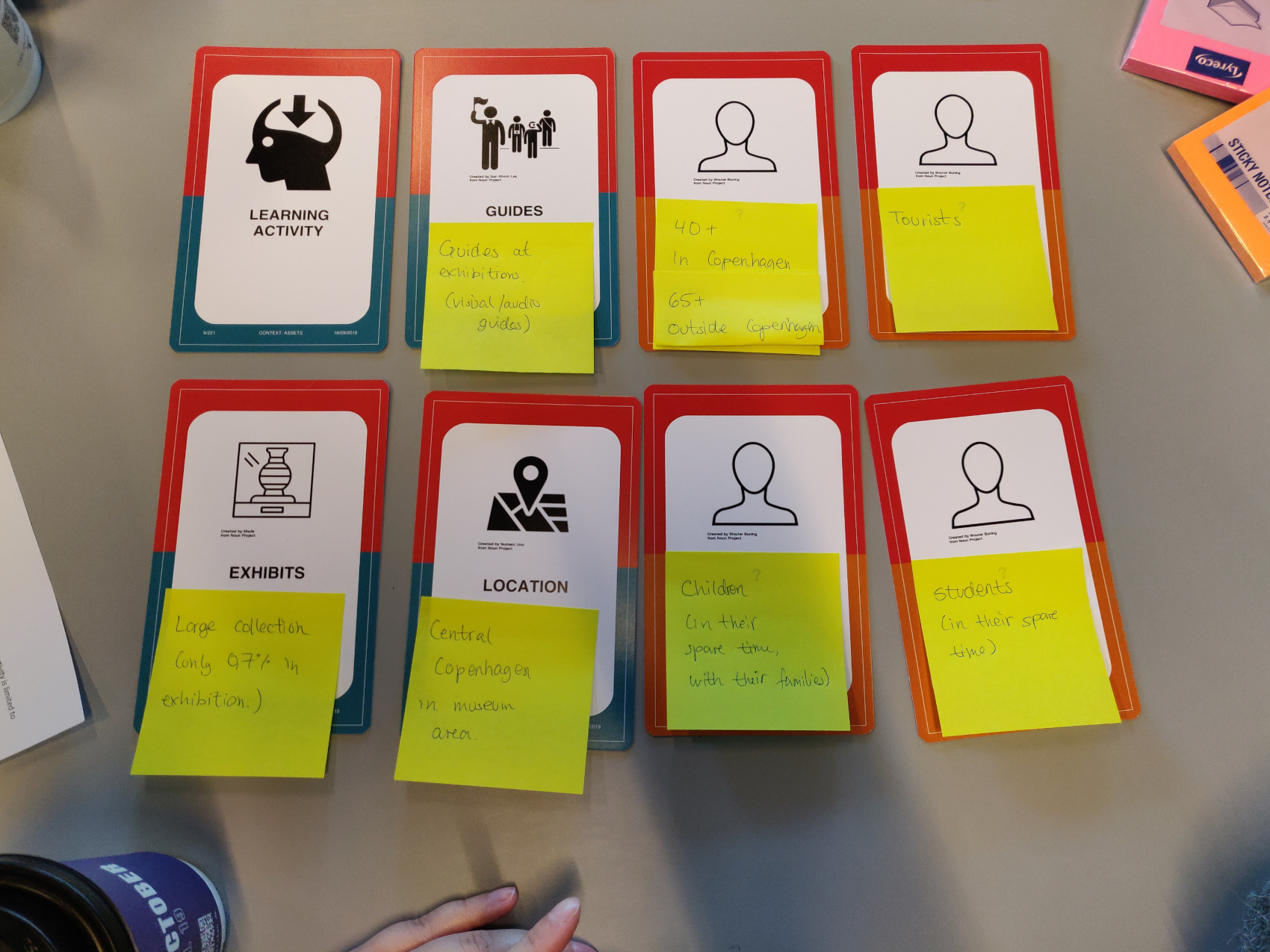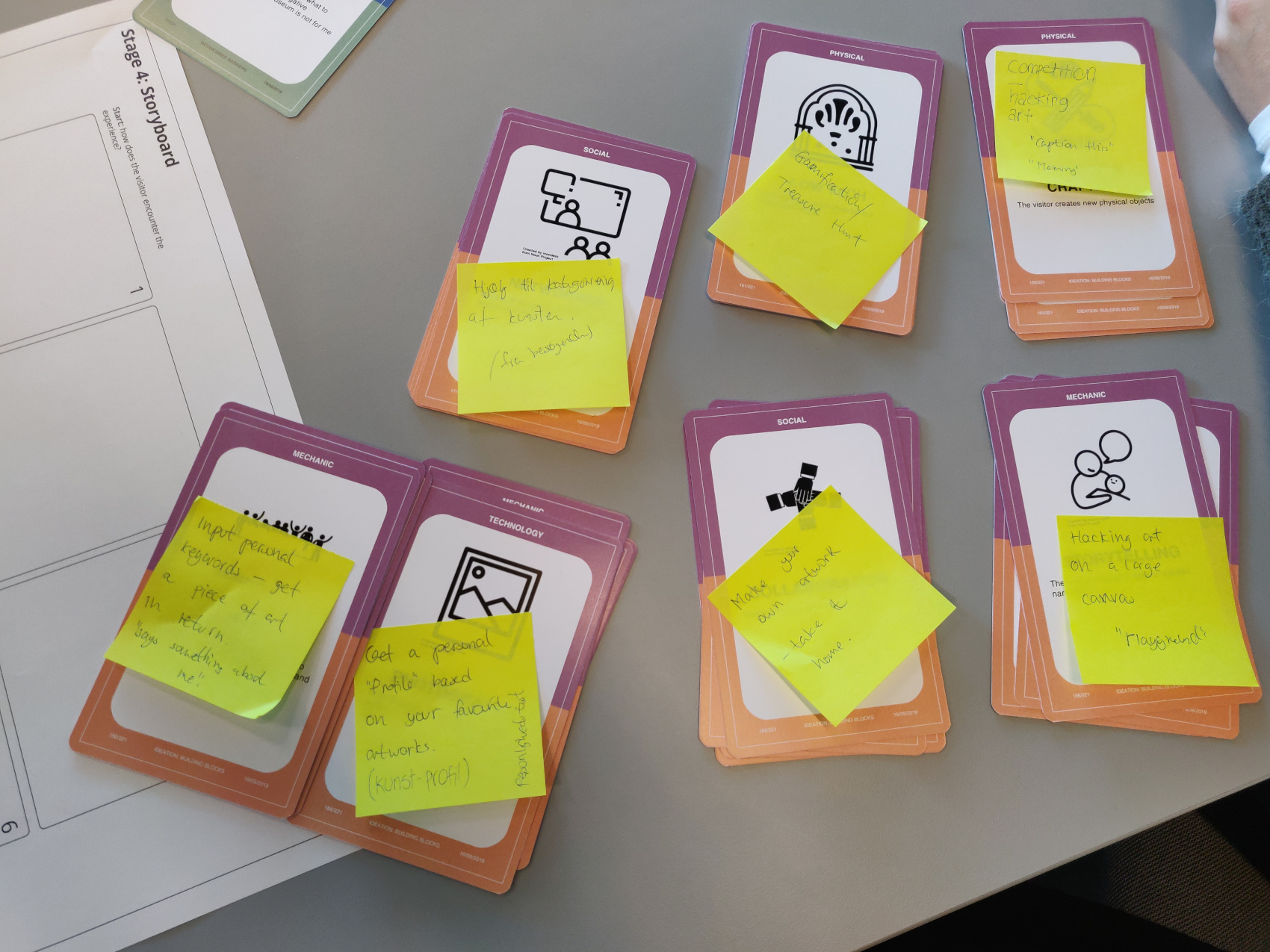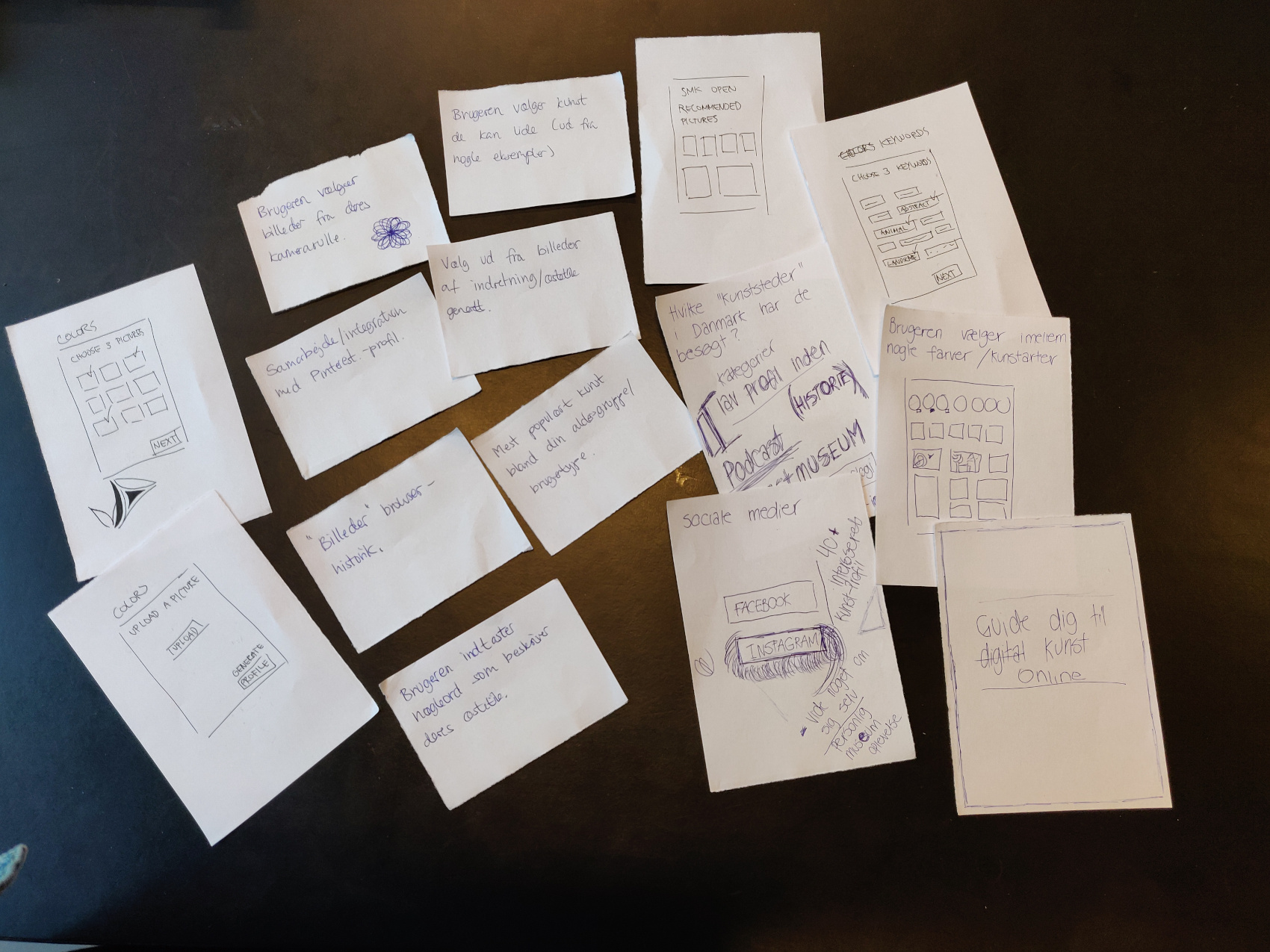Developing Affirming Digital Solutions For The Museum Experience
I had the opportunity to work with SMK (The national gallery of Denmark) on a project that aimed to investigate how digital experiences could enhance the transition between the physical and digital experience at SMK. This task was given to students at the ITU as part of the launch of SMK’s new API that made it possible to access most of SMK’s collection of artworks.
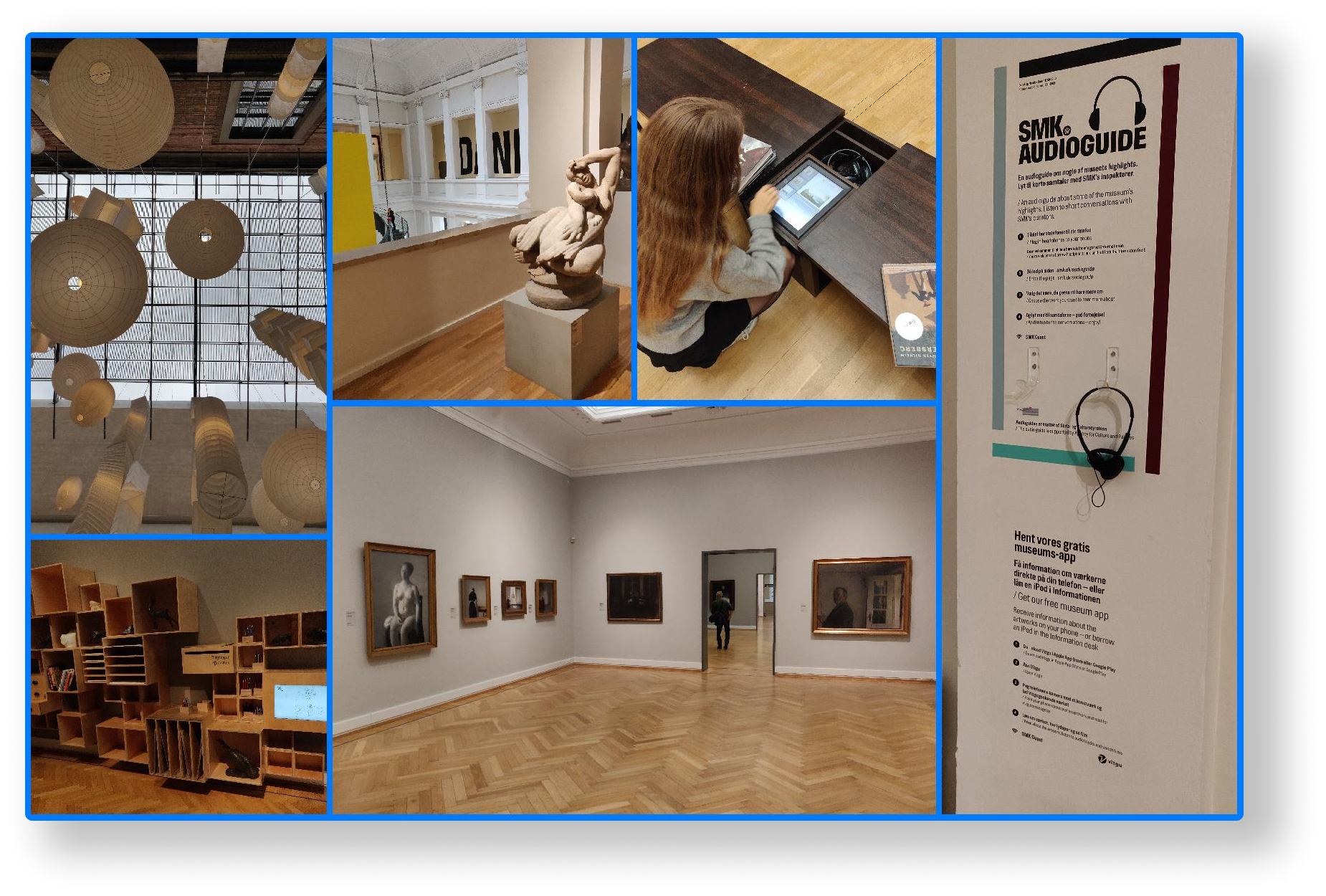
Methodology
We took a research through design approach and used iterative development and evaluation of a technological prototype to gain insight into our target group and their needs. Our process followed the Double Diamond model, starting with initial hypotheses and a defined target audience and goals. Through observations and card mapping, we established our final design brief and research question, and created a customer journey map to identify potential challenges and touchpoints.
The customer journey map was utilized to identify gaps and touch points in the physical and digital experiences at SMK and to determine how a personalized art profile system could support the self-affirming needs of the target audience. To create the map, observation sessions were conducted and the prototype underwent iterative development and evaluation. The map allowed the team to pinpoint potential challenges and touchpoints that could be addressed by the prototype, and the findings informed the design of the prototype, guiding the team in creating a solution that met the needs of the target audience.
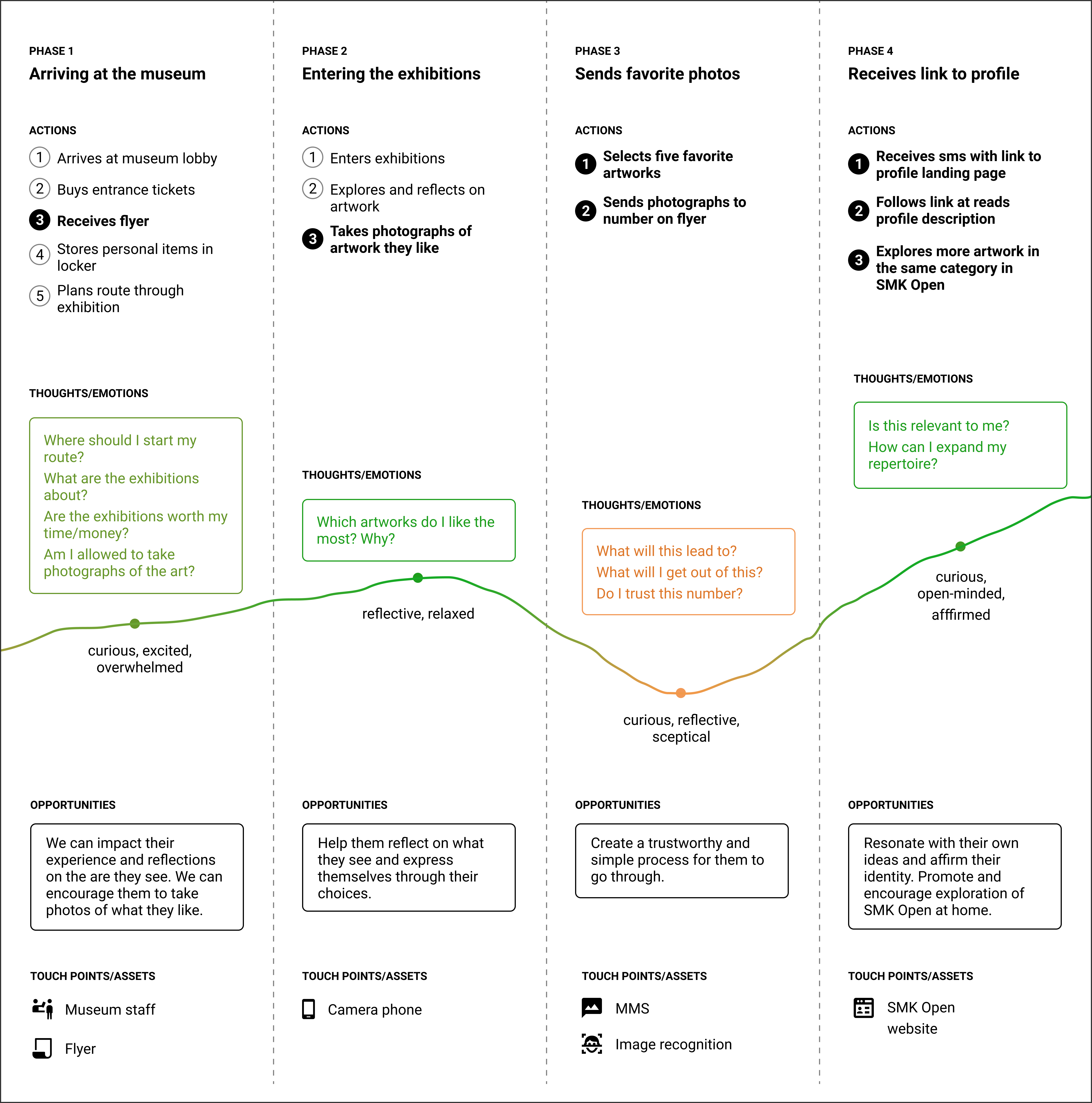

Prototype
To validate our concept, we used a ‘Wizard of Oz’ technique and roleplaying to simulate an SMS reply service and conduct interviews with users selected to match the target group. The participant found the experience engaging and easy to use, and believed the concept would encourage both individual and social reflection.
In the second iteration, we focused on creating a more realistic prototype by developing a custom profile landing page and incorporating real data from the museum’s API. We also aimed to include more filtering dimensions and make the navigation from the prototype to the museum’s website more seamless.
We evaluated the prototype using a combination of satisfaction measures and qualitative interviews, and found that it supported the discovery of new related artworks and was well-suited to the target group. Based on the results of our testing, it was clear that there is potential for a personalized art profile system to enhance the transition between the physical and digital experience at SMK.
Summary and conclusion
Through the process of creating and testing these prototypes, I had the opportunity to utilize a variety of UX design methods, such as card mapping and user interviews. The findings from these evaluations allowed me to make informed design decisions and create a solution that effectively addressed the needs and goals of the target audience. In the end, the project resulted in a successful prototype that provided a seamless transition between the physical and digital experiences at the museum, and supported the self-affirming needs of the users. Overall, this project allowed me to demonstrate my ability to apply UX design principles to create a meaningful and successful user experience.
